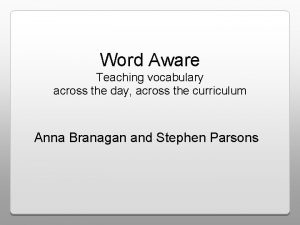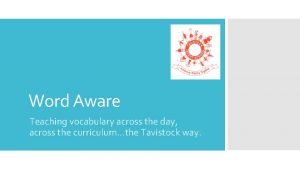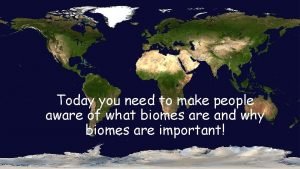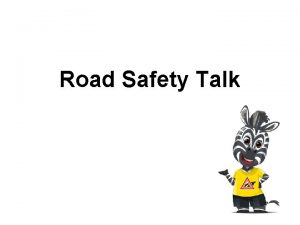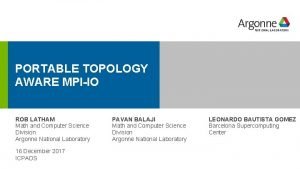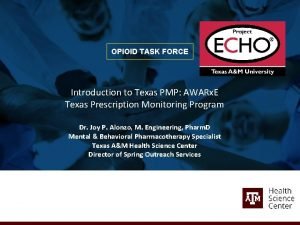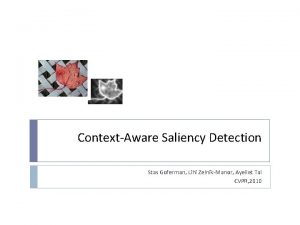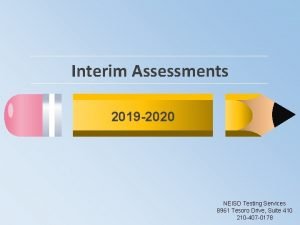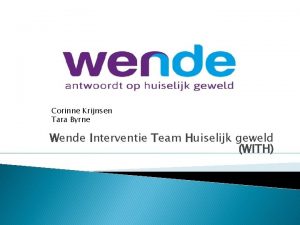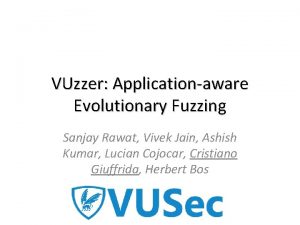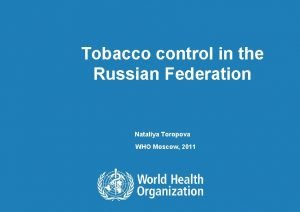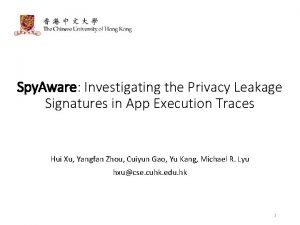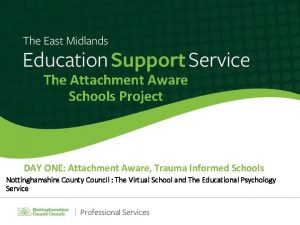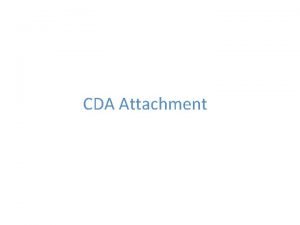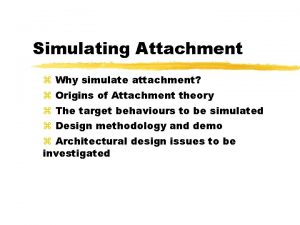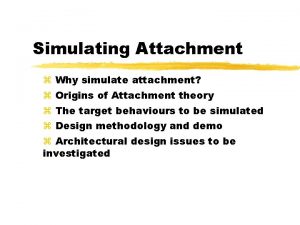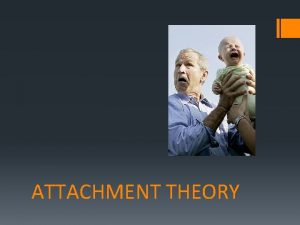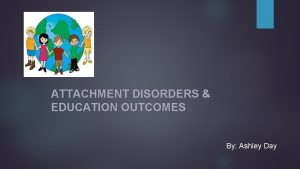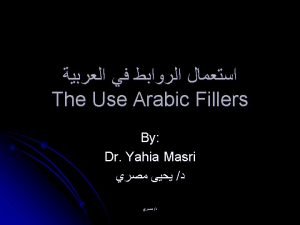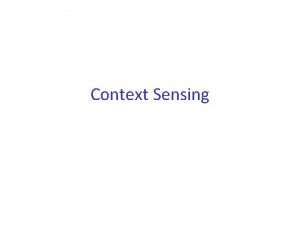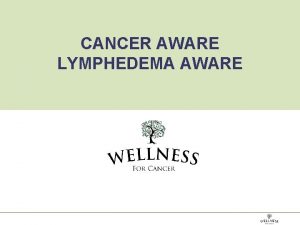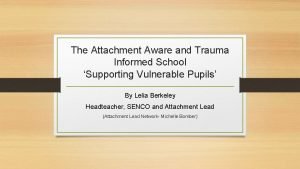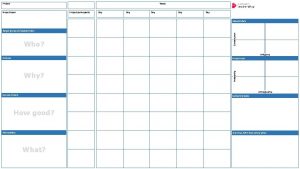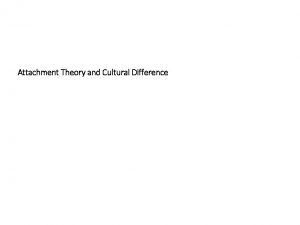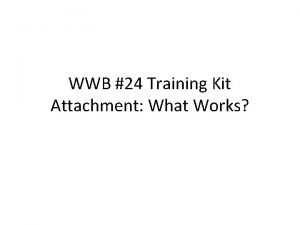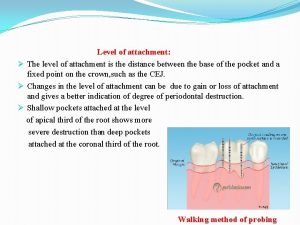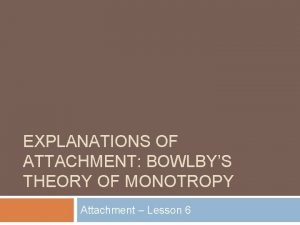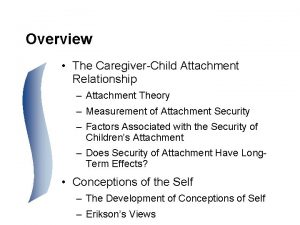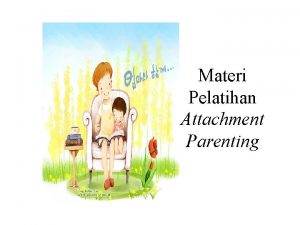The Attachment Aware Schools Project DAY ONE Attachment






































- Slides: 38

The Attachment Aware Schools Project DAY ONE: Attachment Aware, Trauma Informed Schools Nottinghamshire County Council : The Virtual School and The Educational Psychology Service

Aims • To articulate your best hopes of being part of this project… • To understand what the ‘Attachment Aware, Traumainformed Schools’ project is all about • To develop a shared knowledge of ‘Attachment and Trauma’ • To recognise the expertise within the All Together network • To reflect on these psychological frameworks within the context of your school communities • To think about what you would like to do next with this knowledge base…

Plan for the Day 9: 00 -9: 30 -10: 30 -10: 45 -12: 30 -13: 15 -14: 30 -14: 45 -16: 00 Aims and the Bigger Picture Rich Picture Activity Break Attachment Lunch Developmental Trauma Break Trauma Informed and Attachment Aware

• https: //www. youtube. com/watch? v=u. Mbh. B 2 l 4 ut 0 The Bigger Picture: Starting at the end

Reflect on our current knowledge and thinking… Creating a ‘Rich Picture’ What do we understand know about attachment? …and trauma?


Main concepts around attachment and how these relate to school • Definitions & the basics • Relationships – internal working models • Shame & guilt • Neuroscience and Zone of Tolerance • The development of emotional regulation – from coregulation to self-regulation & containment • The PACE Model • The Secure Base Model – school as a secure/safe base

Definitions • Attachment is the process by which new born children develop a close bond with their carers and in doing so learn how to regulate their own feelings, relationships and behaviour. • A secure attachment relationship provides a secure base from which to seek comfort and to explore the world.

Early Experiences • Sensitive and responsive parenting is key. • Simple, repetitive routines give security and a sense of order. i. e. feeding, comforting, consistent care and support, close physical contact, moods and feelings are communicated. • Parents/carers help the child to develop autonomy through a process of letting go and bringing back.

Attachment Continuum Secure Attachment Extreme Insecure Attachment

Secure Attachment ‘Adults are reliable and helpful. I know that I can trust them to look out for me and to meet my needs. I find it easy to trust you and others. I am ok if you are with me or busy doing other things. You find me relatively easy to relate to. ’

Secure Attachment • Greater concentration in play (Belsky & Isabella, 1988) • More positive affect (Sroufe, 1985) • More positive perception of self (Verschuerenm et. al, 1996) • Greater social competence (Sroufe, 1985) • Better performance in age 7 tests (Fagot et. al, 1996) • Greater language skills (Van Uzendoom et. al, 1996) • Greater conflict resolution skills (Cassidy et. al, 1996) • Better school adjustment (Finnegan et. al, 1996)

The Learning Triangle Pupil Teacher Task (Geddes, 2006)

Insecure Attachment Style ‘Adults are rejecting and intrusive. When I meet you, I will avoid and ignore you and look after myself. I won’t be asking you for help no matter what I face. Love? Care? Why would I trust you? You have no idea what I need. ’

The Learning Triangle Pupil Avoids relationship to teacher Teacher Denial of need for support and help from the teacher Focus remains on the task Task

Insecure Attachment Style ‘Adults are unpredictable. I have to draw attention to myself to get you to notice me and make sure I get my needs met. I can’t rely on you working out what I need. Sometimes you will feel like I’m in your face, but I can’t bear being ignored, that’s terrifying. ’

The Learning Triangle Pupil Preoccupied with relationship to teacher Teacher Unable to attempt task unsupported Unable to focus on task Task

Insecure Attachment Style ‘Adults are either frightening by being abusive or frightened because they seem so scared and helpless. I don’t know whether to approach you or run away from you. I feel confused. I’m bad. What is going on? Why should I trust you? Who knows what will happen next? ’

The Learning Triangle Pupil Can’t relate to teacher. May seek to control teacher. Teacher Extreme Anxiety Task Trauma and fear interferes with relationship and attention to the task. Fear masked by anger and aggression

Relationships • Children are biologically predisposed to form attachment relationships. • Children develop range of behaviours to keep attachment figure close. • When the child feels safe they can explore and learn. • Attachment relationships form the basis of an internal working model – a framework for relationships. (Bowlby, 1969)

The development of emotional regulation Adult regulation Coregulation Selfregulation

Containment Bion (1961) said that ‘containment’ was like a mother who is able to receive and understand the different emotional states of her baby and make them more bearable. What was previously unbearable - and therefore projected onto the mother is made bearable. ’


Shame and Guilt



Developmental Trauma • Understanding the difference • Trauma is when a terrible event results in a prolonged ‘alarm’ reaction. • This can be one single event (Type 1) or, a prolonged period of events (Type 2) i. e. Developmental Trauma

https: //developingchild. harvard. edu/resources/aces-andtoxic-stress-frequently-asked-questions/


Neuroscience & Window of Tolerance

https: //www. bing. com/videos/search? q=youtu be+beacon+house&view=detail&mid=9 CA 6 A 5 8249 FAD 16 E 440 A 9 CA 6 A 58249 FAD 16 E 440 A&F ORM=VIRE&adlt=strict

Post-Traumatic Growth 1. Being safe and protected from harm • Safeguarding and school as a ‘secure base’ 2. Coping well • Co-regulation 3. Processing and making sense of trauma/our experiences • Naturally through story-telling and/or play 4. Living the life you choose • The ‘north star’ and the ‘positive and possible’

Best predictors of growth and recovery from difficult events • Flexible coping • Sense of agency • Connectedness


Positive school experiences as a protective factor Voice of the child

Impact of caring well…. secondary trauma Talk about and reflect on how you support your staff? The 3 R’s • Reflection • Regulation • Relaxation “In schools we spend a great deal of time placing oxygen masks on other people’s faces while we [educators] ourselves are suffocating”. (Barth, cited in Houghton, 2001)

Where next… • What has struck a chord with you today? Have any images come to mind? (what do we need to add to our rich picture? ) • Transportation – what will you carry with you from today and how will this change your tomorrow? • Based on these reflections, what is the one thing you’d like to do between now and next week? Write it on a post-it note. • If next week’s training fulfils your best hopes, what will that look like?

For next time… • Be prepared to reflect on the one thing you’ve done. • Bring your behaviour policies
 Day 1 day 2 day 3 day 4
Day 1 day 2 day 3 day 4 Day one day one noodle ss2
Day one day one noodle ss2 Afc futsal coaching course level 1
Afc futsal coaching course level 1 Day 1 day 2 day 817
Day 1 day 2 day 817 Rising he justified freely forever
Rising he justified freely forever Huntsville.powerschool
Huntsville.powerschool Reach safety target
Reach safety target One god one empire one religion
One god one empire one religion One one one little dog run
One one one little dog run One king one law one faith
One king one law one faith One empire one god one emperor
One empire one god one emperor One team one plan one goal
One team one plan one goal See one do one teach one
See one do one teach one One price policy
One price policy Structure of twelfth night
Structure of twelfth night See one do one teach one
See one do one teach one Asean tourism strategic plan
Asean tourism strategic plan Graphic organizer with the aims of la liga filipina
Graphic organizer with the aims of la liga filipina Parsons word aware download
Parsons word aware download Word aware powerpoint
Word aware powerpoint We need to make people aware
We need to make people aware Be aware of your surroundings safety talk
Be aware of your surroundings safety talk Mpi_comm_split_type
Mpi_comm_split_type Pmp aware nm
Pmp aware nm Texas pmp aware
Texas pmp aware Georgia tech aware home
Georgia tech aware home Context-aware saliency detection
Context-aware saliency detection Edirect virginia
Edirect virginia Androidan
Androidan Rover technology
Rover technology Aware online testing neisd
Aware online testing neisd There's nothing worth more that will ever come close
There's nothing worth more that will ever come close Aware huiselijk geweld
Aware huiselijk geweld Context aware firewall
Context aware firewall Rhiannon beauregard
Rhiannon beauregard Vuzzer
Vuzzer I was not aware
I was not aware Spring context aware
Spring context aware Spyaware
Spyaware


















